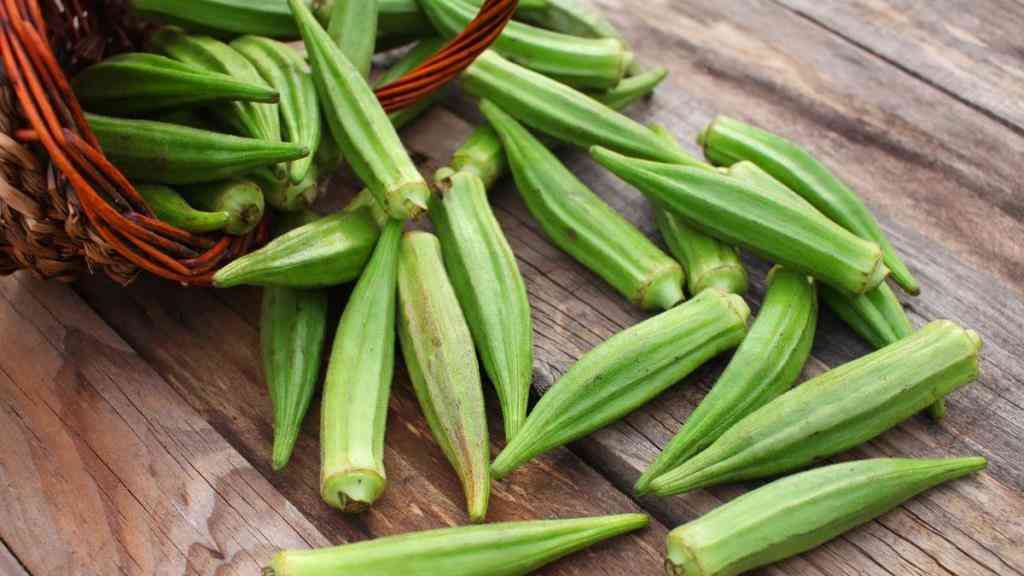Okra, or also known as Gumbo, Lady’s Fingers, or Bamje, is part of the Mallow family of flower-bearing plants.
This nutritious plant crop grows best in tropical to warm regions. It is also known for its traditional medicinal properties like treating diarrhea, kidney infections, and sexually-transmitted infections.
Okra is low in carbohydrates and it is loaded with soluble fiber, vitamins, and minerals which makes it a staple on plant-based and low-carb diets.
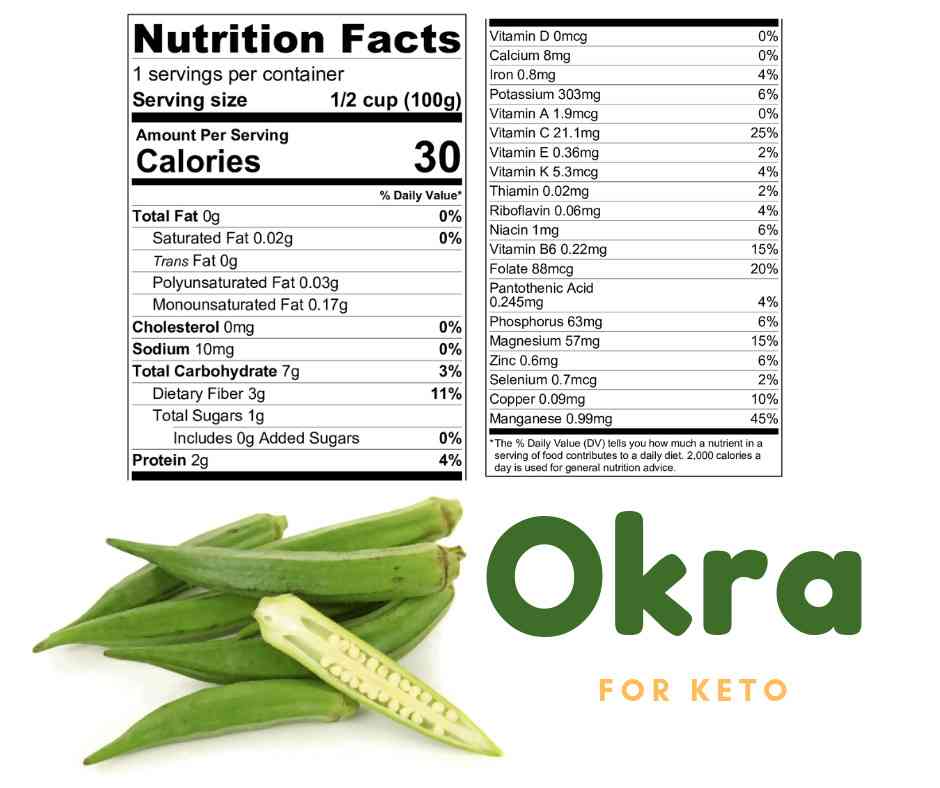
Is Okra Keto-Friendly?
Yes, okra is keto-friendly. It only contains 3g of net carbs and 4g of fiber per 100g of serving.
This palatable fruit pod has also been proven to decrease blood sugar concentration for diabetic individuals. It is also loaded with vitamins, minerals, and electrolytes which can help ease off the effects of keto flu.
Due to the researched pieces of evidence, it has started a healthy trend to recommend servings of okra to the keto diet.
How To Make A Keto-Friendly Okra Fries
Ingredients
- ¾ lb okra
- 1 ½ tsp ginger, grated
- 1 ½ tsp garlic, grated
- 1 tsp salt
- 1 tsp red chili powder
- 1 tbsp corn starch
- 2 tbsp chickpea flour
- ½ tsp cumin, ground
- ½ tsp amchur powder
Steps
- Wash the okra thoroughly and let them dry. Remove the bottom and top portion then split it in the middle vertically to expose the fleshy part.

- Rub the grated garlic and ginger into the okra.

- Mix all the spices including salt, chili powder, cumin, amchur, corn starch, and besan. Use the mixture to coat the okra. The sticky texture of okra will make the coating stick easily.
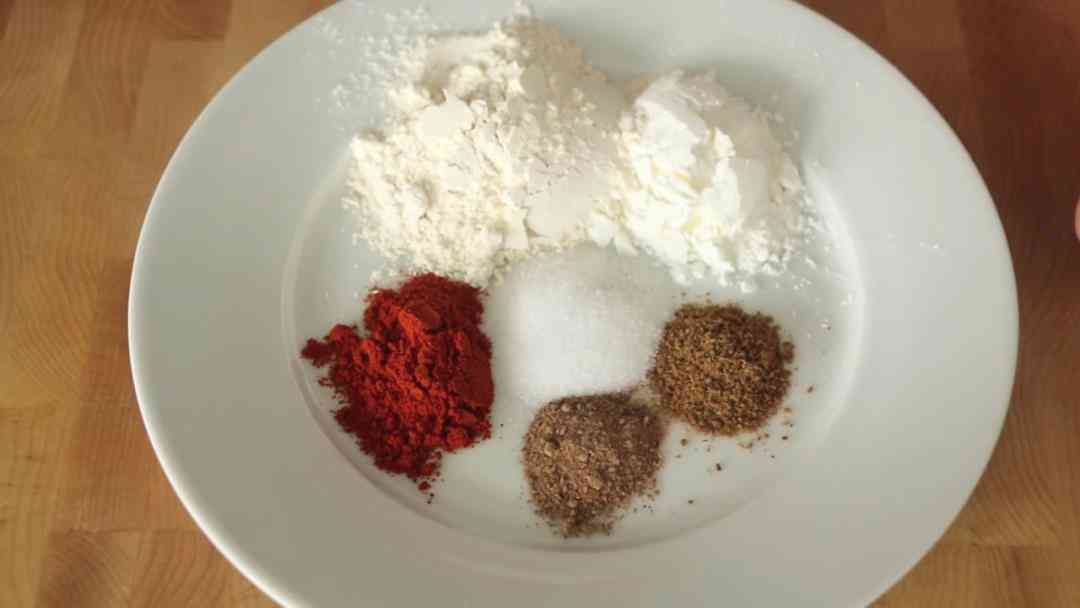

- In a deep frying pan, pre-heat the oil to 400 degrees. Deep-fry the okra in batches for 2 to 3 minutes until golden.
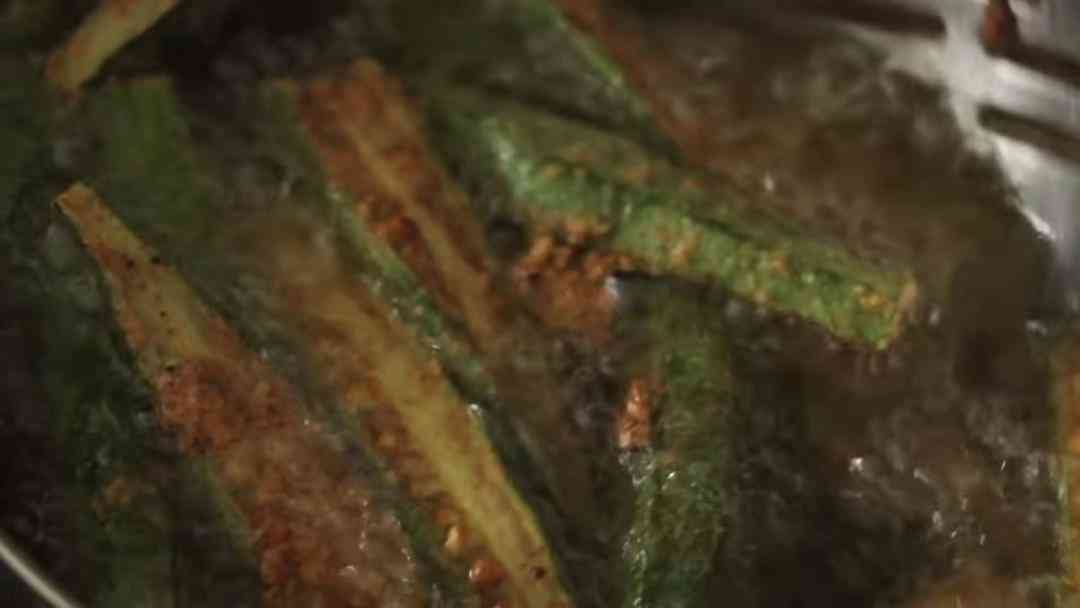
- Drain on a paper towel, sprinkle with little chili powder salt, then serve!
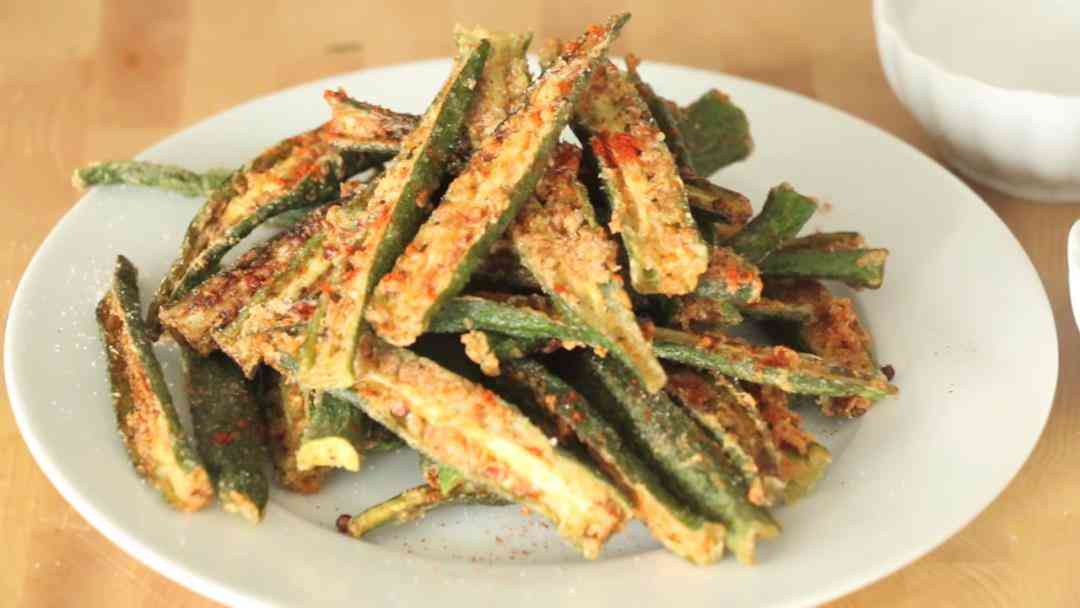
Other Delicious Keto Recipes With Okra
Here are other delicious keto okra recipes that you can try. Click any of the pictures below for the recipe.

Chicken and Okra 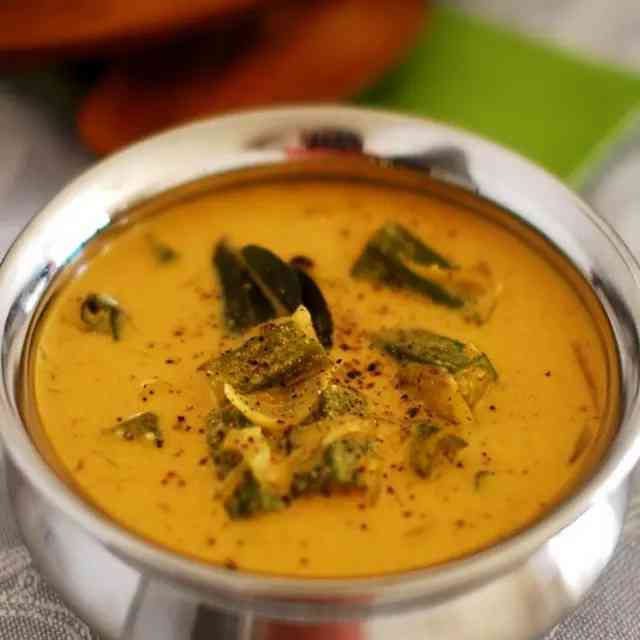
Okra Curry 
Okra Salad 
Okra Stew 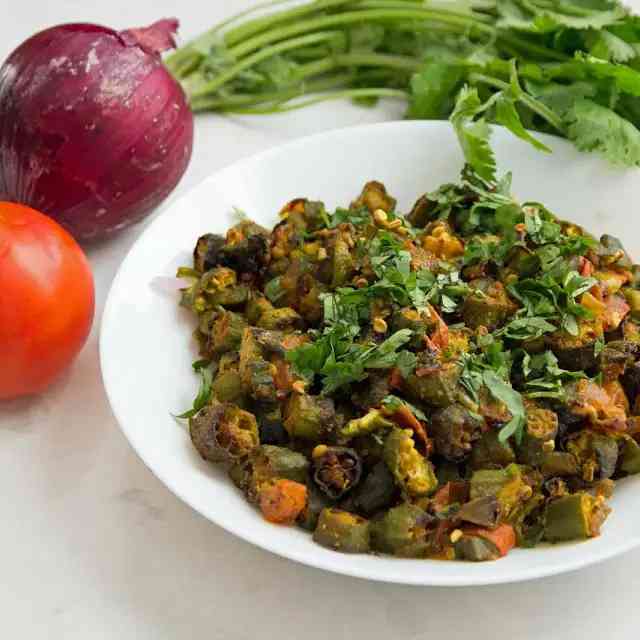
Sheet Pan Bhindi Masala Indian Okra 
Spicy Curried Okra 
Sautéed Shrimp and Okra 
Stewed Okra and Tomatoes
Okra FAQs
Most people think Okra is seen as a vegetable, as it’s always mixed in salads and stews, but it isn’t. A little bit of agricultural knowledge tells us Okra is a warm-season crop and is a part of the cotton (Mallow) family of plants, which bears flowers and fruits. Speaking botanically, Okra’s edible pod emerges from a flower and contains seeds inside. Okra is also not considered a legume, even with the presence of several seeds in the pods, due to its low carbohydrate, non-existent starch content.
This is a bit related to the former question about the plant family of Okra. Technically speaking, Okra isn’t a part of the nightshades or family Solanaceae. Okra belongs to the family Malvaceae or Mallows, which also includes cocoa, cotton, and durian. Though it may contain minute amounts of solanine, Okra outweighs it by containing flavonoids with anti-inflammatory, anti-hyperglycemic and anti-cancer properties, as compared to nightshade crops.
A published study found in the Pakistan Journal of Food Sciences hailed Okra as a powerhouse of valuable nutrients. Its fresh leaves, buds, flowers, pods, stems, and seeds are all edible, raw or cooked. Its mucilage or viscous extract is naturally used to thicken sauces and stews for the added consistency. Extracted oil from Okra is known to be rich in linoleic acid, an anti-inflammatory fatty acid, which is beneficial for keto diet.
You will know if the okra is bad if the pods are soft, brown, and mushy. If you want to lengthen the storage life of your raw okras, putting it inside the freezer can last them up to 10 to 12 months, compared to just putting it inside the fridge.
Episodes of one-sided joint pains may indicate gout or arthritis. High uric acid (hyperuricemia), gout, and arthritis are kind of related to each other as they are the products of joint inflammation due to bad lifestyle and food choices. Gout is usually formed from excessive red meat and dehydration combined. Okra’s plant proteins help in reducing the risks of gout and arthritis with its various phytochemical antioxidants. The consumed plant proteins also don’t contribute to the high deluge of uric acid in cases of gout.
Okra is an excellent food to eat if you’re currently pregnant or trying to conceive (TTC). Okra is rich in folic acid which is necessary for proper brain development of the baby in early pregnancy. A TTC woman may also take advantage of okra’s folic acid content to reduce the incidence of neural tube and congenital heart defects.
Okra has been widely known to contain anti-hyperglycemic properties, with its extracts effectively lowering blood glucose up to 5 to 10%. These results are because of the alpha-glucosidase inhibitor, Myricetin, a flavonoid component of Okra. It does so by curbing the absorption of sugar in the kidneys and intestines.
Okra is good for the heart because of its flavonoid content in the form of Myricetrin. Myricetin can help lower blood pressure by inhibiting activities of Endothelin–1 and Angiotensin II receptors in blood vessels. These naturally-occurring phytonutrients are associated with heart protection, brain function, skin repair, blood glucose, and blood pressure regulation, with bonus antioxidant and anti-inflammatory properties.
The sticky mucus-like material seen in Okra after cooking is called mucilage or Abelmoschus esculentus lectin (AEL). AEL helps in the healing process of ulcers and gastritis induced by excessive alcohol drinking by covering up the stomach lesions. AEL also exhibits an antioxidant effect by involving alpha-2 adrenergic and opioid receptors.
Due to its high oxalate content, okra can precipitate oxalate kidney stones and lower calcium absorption in the body. Moreover, Quercetin, another flavonoid present in Okra, helps decrease inflammation caused by high levels of uric acid and bad cholesterol in the kidneys and improve renal functions. Thus, okra is an excellent food choice for people with a history of calcium oxalate kidney stones.
If you’re taking liver supplements like Silymarin, you may want to look at Okra’s awesome liver benefits. A study published by the Saudi Pharmaceutical Journal used the Ethanolic Extract of Okra (EEO) to see how it could reduce liver inflammation caused by excessive drug intake. The results showed lower liver enzyme levels (SGOT, SGPT, ALP, GGT), decreased lipid levels, and downregulation of free radicals, with an overall protective effect in liver cells. Flavonoids identified and responsible for the above results were Quercetin, Myricetin, Kaempferol, and Isorhamnetin.
Okra has a glycemic index of 32. Any food product with a glycemic index less than 55 is considered great if you’re trying to control blood glucose levels.
Okra has numerous health benefits, starting from the brain to the smallest blood vessels in our body. The following are reasons why it’s considered a good addition on any diet:
1. It’s low carb, containing 4 grams net carb per 100-gram serving
2. Rich in linoleic acid, which is known to burn fat cells
3. A good substitute for soluble fiber
4. An organic supplement for vitamins and minerals to avoid micro-deficiencies
If there are pros, there must be cons. Eating a little too much of okra can still produce a few drawbacks like the following:
1. Increased risk of forming calcium oxalate kidney stones.
2. Diarrhea and bloating caused by excessive amounts of fructans (chains of fructose with a glucose molecule).
3. Higher than normal Vitamin K content which may interfere with people taking anticoagulants like warfarin.
Don’t forget to share this Okra Keto guide with your friends!

References
- https://www.ncbi.nlm.nih.gov/pmc/articles/PMC4221879/, Phytochemical Antioxidants of Okra
- https://medicalresearchjournal.org/index.php/GJMR/article/view/849/762, Okra and Pregnancy
- https://www.ncbi.nlm.nih.gov/pmc/articles/PMC3263724/, Okra’s Effect on Lowering Blood Sugar
- https://www.ncbi.nlm.nih.gov/pmc/articles/PMC3260072/, Benefits of Flavonoids in Okra on Heart Health
- https://www.ncbi.nlm.nih.gov/pubmed/26831461, AEL in Okra as Antioxidant
- https://www.ncbi.nlm.nih.gov/pmc/articles/PMC4525130/, Effects of Okra on Kidney Stones
- https://www.ncbi.nlm.nih.gov/pmc/articles/PMC3745186/, Effects of Okra on Liver Inflammation

